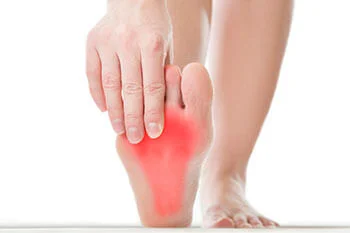Table of Contents
Choosing comfortable footwear often involves finding shoes with ample room—but is there such a thing as too much space? Oversized shoes might feel roomy at first, but wearing shoes that are significantly larger than your feet can lead to numerous foot issues and discomfort. In this article, we’ll explore the dangers of wearing shoes that don’t fit properly and provide practical solutions.
What Happens When You Wear Shoes That Are Too Big?
Shoes that are excessively large fail to properly secure your feet. As a result, your feet slide around within the shoe, leading to instability and friction. Over time, this friction can cause various foot issues, including:
- Blisters and Sores: Constant movement creates friction, resulting in painful blisters and sores on your heels and toes.
- Corns and Calluses: Repeated rubbing and pressure can lead to thickened, hardened areas of skin known as corns and calluses.
- Tripping and Falls: Shoes that are too big reduce stability and increase the risk of trips, falls, and ankle sprains.
- Ingrown Toenails: Sliding feet inside oversized shoes may cause your toes to repeatedly strike the shoe’s interior, leading to nail injuries and ingrown toenails.
- Foot Pain and Fatigue: The lack of proper support from oversized shoes can cause foot fatigue, soreness, and strain on your feet and legs.
Why Do People Choose Oversized Shoes?
People often select shoes that are larger than necessary for several reasons:
- Belief that oversized shoes provide comfort, especially after experiencing tight-fitting shoes.
- Uncertainty about their exact shoe size or variability between brands.
- Purchasing shoes for growing children or teenagers to accommodate future growth.
How to Identify if Your Shoes Are Too Big
To determine whether your shoes might be oversized, consider the following signs:
- Your heel consistently slips when walking.
- You frequently trip or stumble due to instability.
- Excessive room at the toe area (more than about half an inch).
- Your feet shift side-to-side within your shoes.
Tips for Choosing the Right Shoe Size
Selecting properly fitted shoes is essential to prevent foot discomfort and injuries. Follow these tips:
- Get Professionally Measured: Visit a shoe store to have your feet accurately measured, ideally at the end of the day when feet are slightly swollen.
- Test the Fit: When trying shoes, there should be roughly a thumb’s width of space between your longest toe and the shoe’s tip.
- Consider Width, Not Just Length: Shoes come in various widths, so ensure you choose shoes that comfortably accommodate your foot width.
- Walk Around: Always walk around in new shoes to ensure they’re comfortable and stable.
Can You Fix Shoes That Are Slightly Too Big?
If you’ve already purchased slightly oversized shoes, you can use the following techniques to improve the fit:
- Insoles and Inserts: Orthotic insoles or cushioned pads can fill extra space and stabilize your feet.
- Heel Grips: Adhesive pads at the back of shoes can prevent slipping and reduce friction.
- Thicker Socks: Wearing thicker or layered socks can temporarily fill the extra space.
However, if shoes are excessively large, it’s best to find a properly fitting replacement.
When to Seek Professional Foot Care
If you’re experiencing persistent foot discomfort or problems due to ill-fitting shoes, consulting a podiatrist can help. A professional can address existing foot issues and recommend footwear solutions tailored to your foot health.
Final Thoughts
While it might seem harmless, regularly wearing oversized shoes can lead to serious foot issues and discomfort. Prioritizing proper shoe fit supports your overall foot health, prevents injuries, and keeps you comfortable throughout the day. If you’re uncertain about your shoe size or experiencing foot discomfort, seek guidance from a foot specialist to ensure your footwear enhances—not harms—your health.

The UFAI Education Team
The UFAI Education Team is comprised of leading foot and ankle specialists at University Foot & Ankle Institute, dedicated to advancing patient care through education, research, and innovation. With decades of combined experience, our board-certified podiatrists provide expert insights into the latest treatments and surgical advancements. Committed to empowering patients with reliable information, our team ensures that every article reflects the highest standards of medical excellence.


